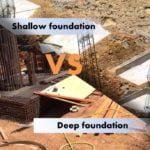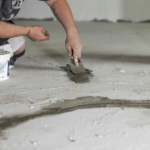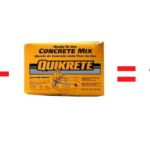Are you looking to undertake a project involving bricks and are bit worried about quality of bricks. If yes, you must act swiftly and undertake test of bricks. Some of these quality control parameters are a simple DIY job.
So, let’s see some of the common tests on bricks to avoid hefty loss on your project down the road:

Brick – an inherently common construction material
A Brick is a rigid and a very common construction material in construction and civil engineering across UK. Its production process includes ground clay as a primary ingredient. Water adds up the ability of clay to get any desired shape or form with the help of a mold.
Because suitable clay is readily available in almost everywhere on the world, its fabrication is pretty simple. There’s no need of hefty shipment costs to your project. On comparing it with stone, concrete, or steel; bricks are quite affordable.
This versatile material of building construction has been in service of mankind for almost thousands of years. Anyhow, due to its durability, versatility, and affordability, it is still among the top few construction materials suitable for construction of various civil engineering and construction projects.
Also Read: Types of bricks – Classification & Uses (Don’t Miss)
Why bricks are too common?
Bricks are used for various construction purposes because it is made of material, which is easily available, provides good strength, durability, reliability and good thermal and acoustic insulation. From buildings to bridges and from walls to floors, and from patios to sidewalks; it’s everywhere – you just name it.
Why to check quality of bricks?
But it’s easy availability, doesn’t mean you can use it without testing the quality. Bricks need to have some mechanical and physical characteristics so it’s suitable for project requirements. Some architectural applications require you to obtain high class bricks having restrictions in physical parameters. You can’t use un-burnt bricks for archways and at the same time high class bricks are not suitable for soling.
Also Read: Fly Ash Bricks – Advantages – Disadvantages – Properties – Vs Red Bricks
A brick is made of various ingredients which includes lime, silica, alumina, magnesia, iron oxide, potassium and sodium. The major ingredients of good bricks are silica and alumina which are in the range of 50-60% and 20-30% respectively. The remaining ingredients are included in very small amounts.
Is brick construction sustainable?
Because the simple manufacturing, it is quite a good material for sustainable construction. Moreover, it is less damaging than many other materials like concrete, asphalt, or wood. When it comes to recycling, it’s a pretty simple and straightforward process.
Also Read: Types of Brick finishes – Brick Wall Texture
Manufacturing Process of Brick
A brick is manufactured by passing through four stages. In the first stage clay material which is available on site is dug out in clear weather and different stones and matter is removed. It is then left for weathering for few weeks. Then clay is tempered in pug mills. After preparation of clay molding of bricks is carried by placing it in molds and then allow for drying of bricks. When the bricks are dried properly, they are burnt in kiln at a temperature of 1000-1200 C. In the last stage after burning bricks are allowed to cool for a period of twelve days.
Different Tests of Bricks
Various tests are done on bricks in order to check the compressive strength, durability and quality of bricks. The main purpose of these tests is quality control of bricks. Some tests are done in laboratory and some tests are done on site. Some important tests are explained below.
Compressive Strength Test
For compressive strength test we will take five random bricks from construction site as a sample and then immersed in water for 24 hours at room temperature. Then we will clean the surface of bricks and fill the top depression (frog) by mortar of standard ratio 1:1 (1 part of cement and 1 one part of sand). We will leave these bricks under damp condition for 24 hours to allow setting of mortar. After that we will place these bricks in water for 7 days so that mortar become hard. After given time bricks will be removed from water and then dried. After drying of bricks, a compressive strength test will be done on each brick individually Bricks will be placed one by one in compression testing machine. Brick will be placed flat between the plywood sheets and frog facing will be on upward side. Load is applied at a uniform rate of 140 kg/cm^2 per minute. We will note the reading and final reading will be taken at which brick will break. We will note the load reading of all bricks at which each brick will break. Then we will divide the load by cross sectional area to get compressive strength.
Compressive strength = Load at which brick break/Cross sectional area
After getting value of compressive strength of each brick we will take mean and average value will be the compressive strength of brick.
- For 1st class brick minimum compressive strength is 105 kg/cm^2
- For 2nd class brick minimum compressive strength is 70 kg/cm^2

Water Absorption Test
Take five bricks randomly from construction site. Then dry the bricks by placing them in oven at a temperature of 110+-5 °C For 24-48 hours. The purpose of this drying is to achieve homogeneity and to avoid variation in results. After drying of bricks weight of each brick will be taken. The dry samples then immersed in water at room temperature for a period of 24 hours. After 24 hours samples will be taken out then wiped and weight of each brick will be taken again. Absorption value then calculated by formula given below
Absorption= (B-A/A) *100
A= Dry weight of brick
B=Weight of brick after immersion
Then average will be taken of five readings and that will be the absorption value of brick.
- For 1st class brick maximum absorption should not be more than 20% of weight of dry brick.
Also Read: Pointing in Brickwork – Types – Keyed Pointing – Tuck Pointing

Efflorescence Test
Take five random bricks from construction site. Then place each brick on end separately in flat dish filled with distilled water. The depth of immersion should not be less than 2.5 cm for each brick. Then these dishes will be placed in warm room of temperature range from 18 to 30 °C and proper ventilation should be provided. The water will be vanished from dishes due to absorption by bricks. When bricks appear dried add more quantity of distilled water. After drying of bricks, a white powdered like deposit will be appeared on the surface of brick which is efflorescence.
- If brick surface area is covered with salt deposits more than 50 % then brick has heavy efflorescence.
- If brick surface area is covered with salt deposits between 10-50 % then it has moderate efflorescence.
- If brick surface area is covered with salt deposits less than 10% then it has slight efflorescence.

Brick Dimension Test
Select twenty bricks randomly from construction site. Then remove the loose clay particles and blisters from bricks. After cleaning the bricks arrange them in series on smooth level surface is such a way that adjoining surfaces are in contact with each other. Bricks will be placed lengthwise, and length of each brick will be measured and should be in specified dimension. Similarly, then bricks will be placed on width in series and then on side face for height of brick. Each dimension of brick should be in limit.
- The standard size of brick used in Sub-Continent including India, Pakistan, and Bangladesh is 9 inch * 4.5 inch * 3 inch.
Also Read: Standard Brick Size – Brick Dimensions that you MUST Know

Hardness Test
A good brick is one which does not scratch when we apply lines with sharp things. Any sharp tool can be used for this purpose. A fingernail can also be used. If a brick resist scratch when done with sharp tool or nails and left, no impression on surface it is said to be hard brick.

Color Test
The bricks should not be over burnt or under burnt and its color should be uniform throughout the body. Good bricks are normally reddish in color.

Soundness Test
We need to make sure the brick is able to sustain sudden impact. Like a man hitting a wall or an impact during transportation. Obviously, you don’t want to have half of bricks becoming brick bats on their way to your house project.
Here soundness also relate with the word “sound”. If you pick up two bricks randomly from the lot and strike it against each other – the brick must show clear bell ringing sound. If both or one bricks can’t sustain this impact, it’s likely to be a bad quality brick.
Also Read: Different Shape Bricks (13 Shape Types I bet unknown to You)

Brick structure
Another quality parameter for bricks is relevant to its structure. So, try to pick up a random brick, break it apart and observe the inner portion. If you can’t find any lumps and the surface is homogenous throughout without any significant change of color or texture; you have a good quality brick.
Further Read: Properties of Bricks – Compressive Strength -Hardness – Efflorescence















